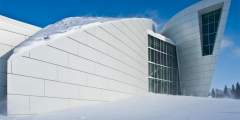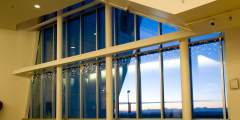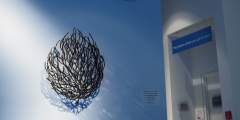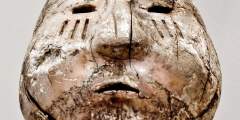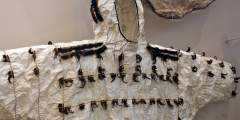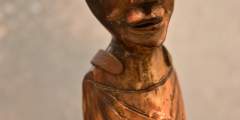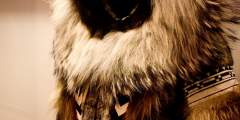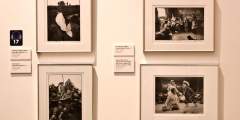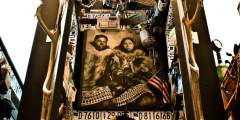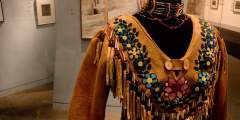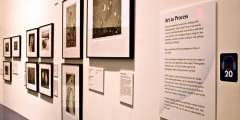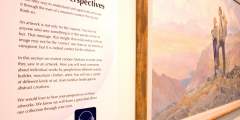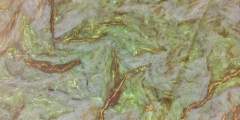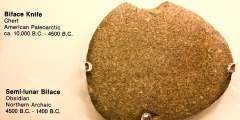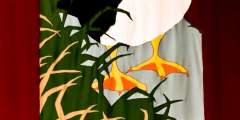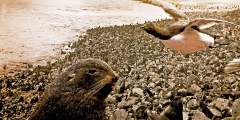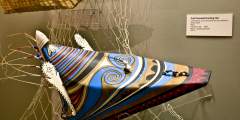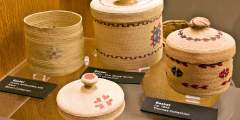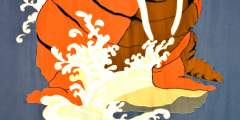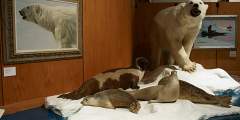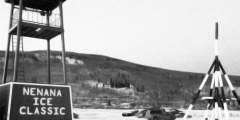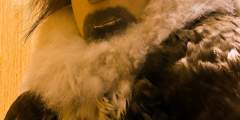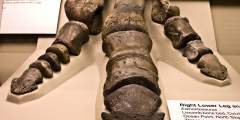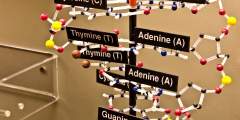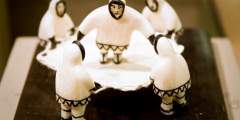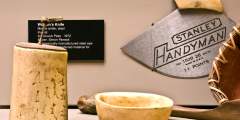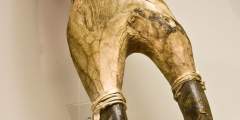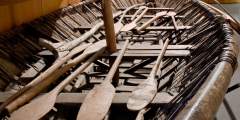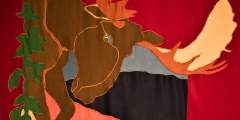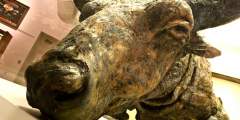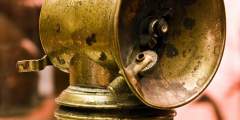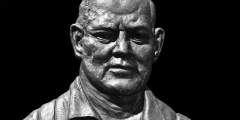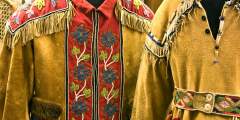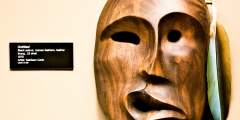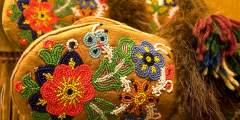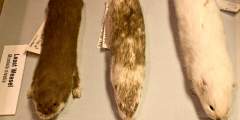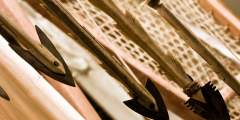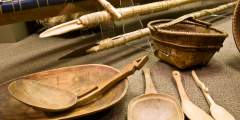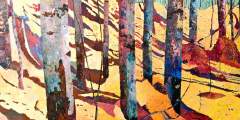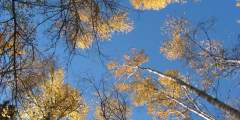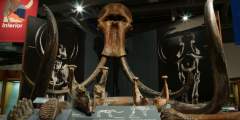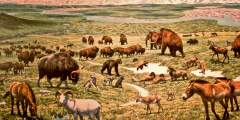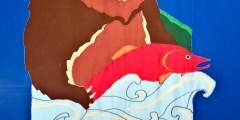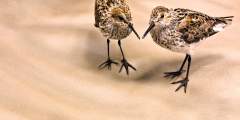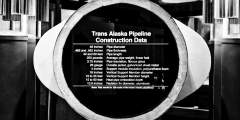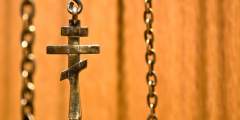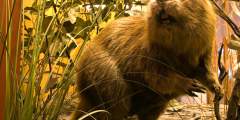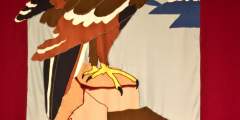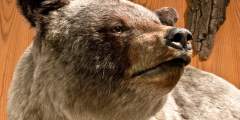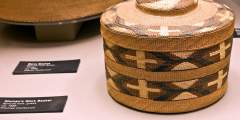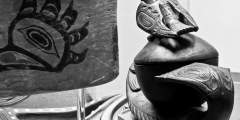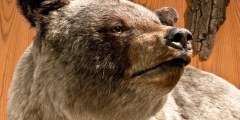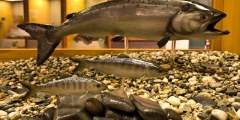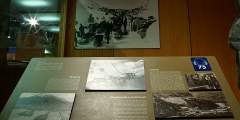UA Museum of the North Audio Guide
Discover fascinating stories about Alaska's people, places, and wildlife at the University of Alaska Museum of the North - your best introduction to this vast and diverse state. From Alaska Native art to polar dinosaurs, whatever your interest, you'll find something appealing on exhibit.
A trip to Fairbanks isn't complete without a visit to the museum. In the Gallery of Alaska exhibits are grouped thematically to represent Alaska's major ecological and cultural regions. Highlights include Alaska's largest gold display, extensive displays of Alaska Native art and artifacts, and the world's only restored Ice Age steppe bison mummy. Watch videos on the aurora, a whale hunt, and Alaska Native dances. Accredited by the American Association of Museums.
Hours
- Summer (May 15-Sep 15): 9am-7pm (daily)
- Winter (Sept 16 - May 14): Mon-Sat: 9am-5pm
- Closed Sundays, Thanksgiving, Christmas Day and New Year's Day
Admission
- Adults: $10
- Seniors (60 & older): $9
- Youth (7-17): $5
- Children (6 & under): Free
- UA Museum of the North members & UA students: Free
- Group rates available
UA Museum of the North Audio Guide
The curves of the museum’s architecture entice ravens to come and play in the wind currents along its eaves. Bird Curator Kevin Winker explains the role of ravens in Alaska’s culture.
Grammy and Pulitzer prize-winning Composer John Luther Adams describes what you’ll hear in the gallery called The Place Where You Go to Listen, the vibrations of the earth and sky translated into sound.
Welcome to the Rose Berry Alaska Art Gallery. Listen to an overview of our newest art gallery.
Former Archeology Curator Dan Odess describes how a wide range of daily activities, from religious ceremonies to combing hair, influenced the art of ancient Eskimo societies.
This seal gut rain parka was painstakingly made to be beautiful yet functional. A hunter’s life depended on how well made a parka was constructed.
Former curator of Ethnology, Molly Lee, describes the beauty and history of Alaska Native art.
Over 1,000 years old, the Okvik Madonna is a subtle yet priceless piece of Eskimo art.
Molly Lee talks about the incredible detail of Eskimo clothing. Did you know that a fur parka is made from roughly 20 differently shaped pieces.
James Barker describes his style of documentary ethnographic photography.
Listen to locals describe their version of the Great Alaskan Outhouse.
Former curator of Ethnology, Molly Lee talks about the traditional process of tanning a moose hide.
John Manthei explains how an artist can see more than the rough material in the beginning stages of creating a piece of art.
A description of the gallery, Our Own Perspectives. In this area you can read how non-artists interpret these works of art.
Welcome to the Living Room. A beautiful, relaxing place to watch how light and shadows play on the walls and ceiling.
Jade is an incredibly hard stone that is only found in a 10 x 30 mile strip of Alaska in the Kobuk Valley.
A brief description of the history of Alaska and Alaska’s first residents.
A description of Southwest Alaska. Hear a conversation in rough weather on the Aleutian Islands
Listen to a profile of the animals that populate the Pribilof Islands.
Bentwood Aleut hats are made by splitting a tree into delicate planks, then carving and bending the planks into graceful visors.
A look at items that represent the Inupiaq and Yup’ik cultures of the Western Arctic Coast.
Listen to a radio clip about a Nenana Ice Classic break-up contest winner.
Curator of Earth Sciences, Patrick Druckenmiller talks about a few of the many species of arctic dinosaurs.
A description of what systematics and DNA research mean to our scientists.
A description of the decoration styles used by the earliest inhabitants of St. Lawrence Island.
The crescent bladed knife called ulu is a traditional woman’s knife. Look closely at an ulu handle, there are often specific designs that reference the maker.
A description of the Yup’ik and Inupiaq belief in Inua, a connection between human and animal spirits.
Listen to a description of the amazing Umiak, an open, highly seaworthy craft made of driftwood and walrus skins.
A regional profile of the Interior of Alaska. This discusses weather, the economy, and the people of the Fairbanks area.
Blue Babe is one of our most popular exhibits. Hear the story of an Ice Age mummy that is approximately 36,000 years old.
Fairbanks is a gold rush city. Listen to the story of how Fairbanks began.
Fairbanks history has always been boom or bust. This exhibit is the largest display of gold nuggets in the State.
The story of Kathleen Carlo, an Athabascan mask maker.
Athabascan embroidery, a description and history of this amazing traditional art.
Hear the seasonal round of the Athabascan people. This tour describes how and where they lived throughout the year.
Take this chance to hear what a typical village in Interior Alaska sounds like in the morning.
Barry McWayne describes the art of Kesler Woodward, Fairbanks painter.
Listen to a soundscape of wind blowing through birch trees in the Alaska interior.
This tour describes our Woolly Mammoth and Mastodon exhibit. Listen to the differences between these extinct animals.
The Bering Land Bridge was an important crossroads between North America and Eurasia.
South Central Alaska. Hear a description of this geologically active area of Alaska.
Kevin Winker, curator of birds, talks about Alaska’s Shorebirds. Hear bird calls and listen to some of the stories of their incredible migrations.
A short history of the Trans-Alaska Pipeline. The 800 mile pipeline was built in 3 years while crossing some major hurdles.
A story of Russian Orthodox missionaries work in Alaska. This exhibit shows a translated version of the Russian Catechism in the Aleut language.
This exhibit shows what the bluish colored Glacier Bear looks like up close.
Traditional Tlingit baskets were made from the roots of Spruce trees.
Traditional Northwest Coast art designs emphasized the essence of an image rather than the whole image.
A description of the salmon’s history and life cycle including the story of their migration home.

